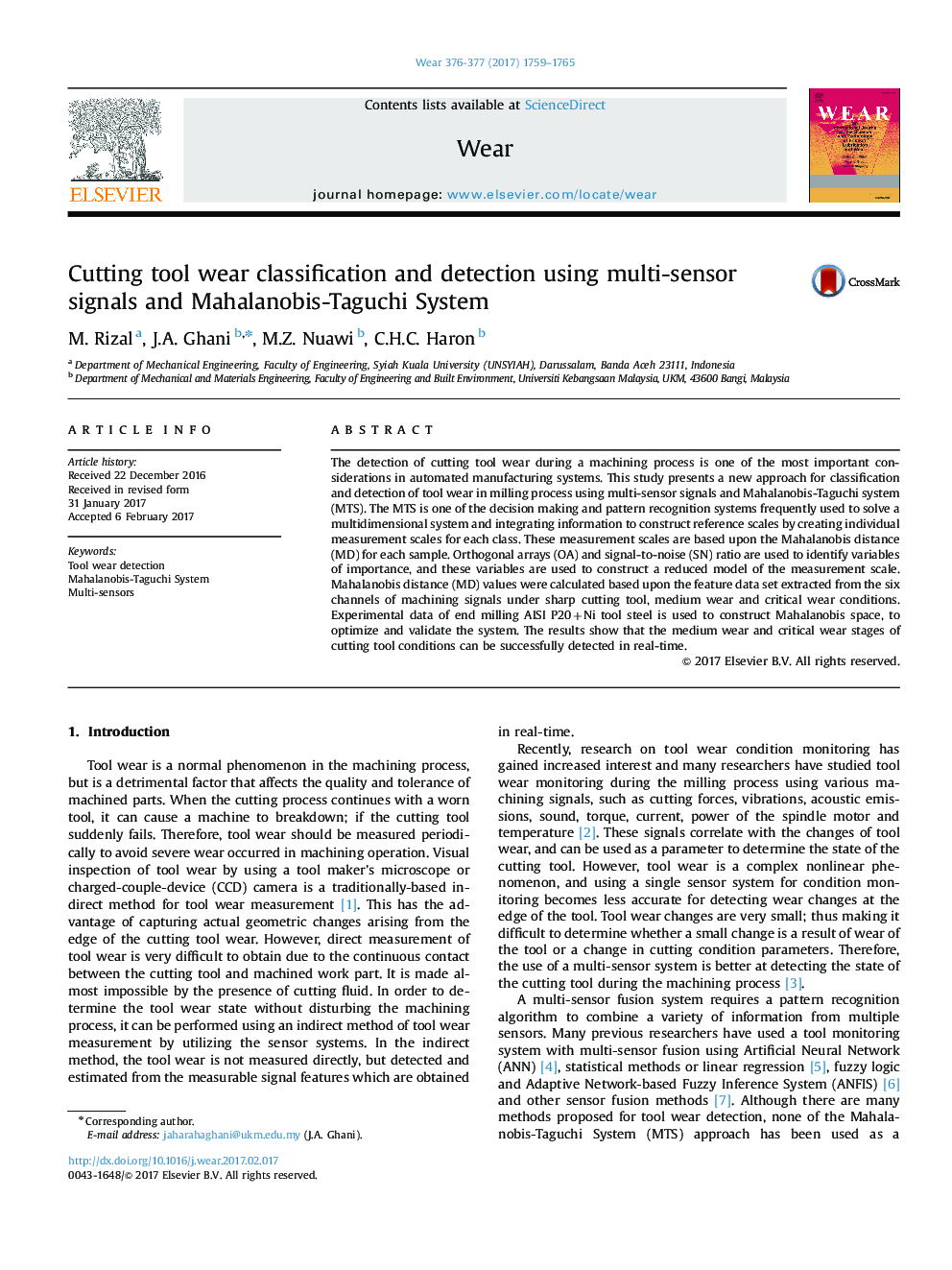| Article ID | Journal | Published Year | Pages | File Type |
|---|---|---|---|---|
| 4986623 | Wear | 2017 | 7 Pages |
Abstract
The detection of cutting tool wear during a machining process is one of the most important considerations in automated manufacturing systems. This study presents a new approach for classification and detection of tool wear in milling process using multi-sensor signals and Mahalanobis-Taguchi system (MTS). The MTS is one of the decision making and pattern recognition systems frequently used to solve a multidimensional system and integrating information to construct reference scales by creating individual measurement scales for each class. These measurement scales are based upon the Mahalanobis distance (MD) for each sample. Orthogonal arrays (OA) and signal-to-noise (SN) ratio are used to identify variables of importance, and these variables are used to construct a reduced model of the measurement scale. Mahalanobis distance (MD) values were calculated based upon the feature data set extracted from the six channels of machining signals under sharp cutting tool, medium wear and critical wear conditions. Experimental data of end milling AISI P20+Ni tool steel is used to construct Mahalanobis space, to optimize and validate the system. The results show that the medium wear and critical wear stages of cutting tool conditions can be successfully detected in real-time.
Keywords
Related Topics
Physical Sciences and Engineering
Chemical Engineering
Colloid and Surface Chemistry
Authors
M. Rizal, J.A. Ghani, M.Z. Nuawi, C.H.C. Haron,
